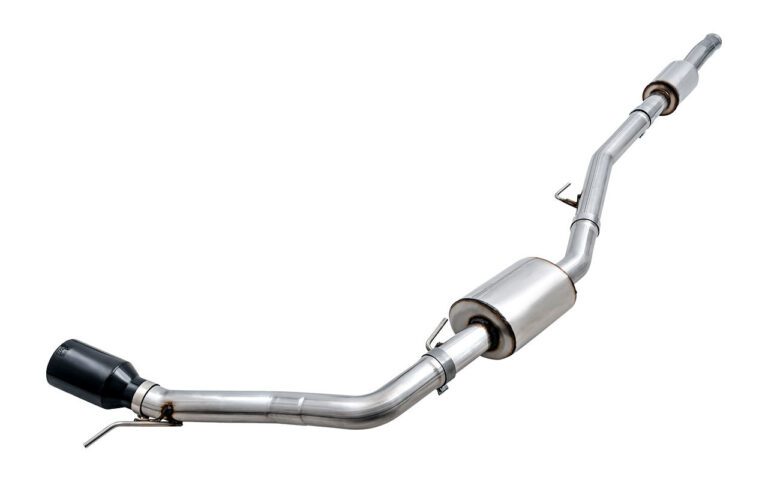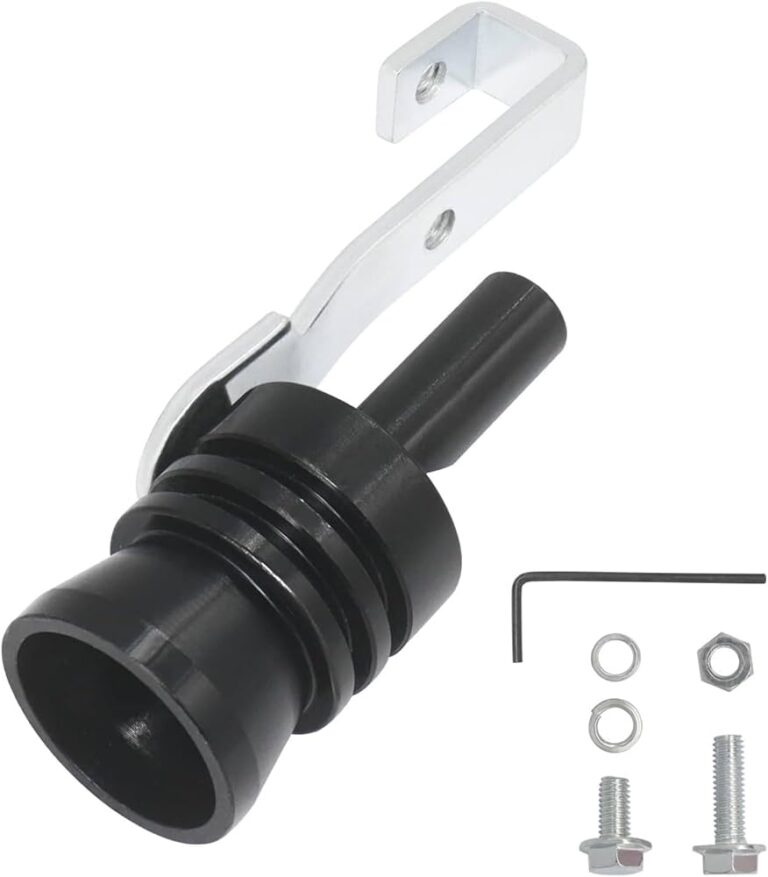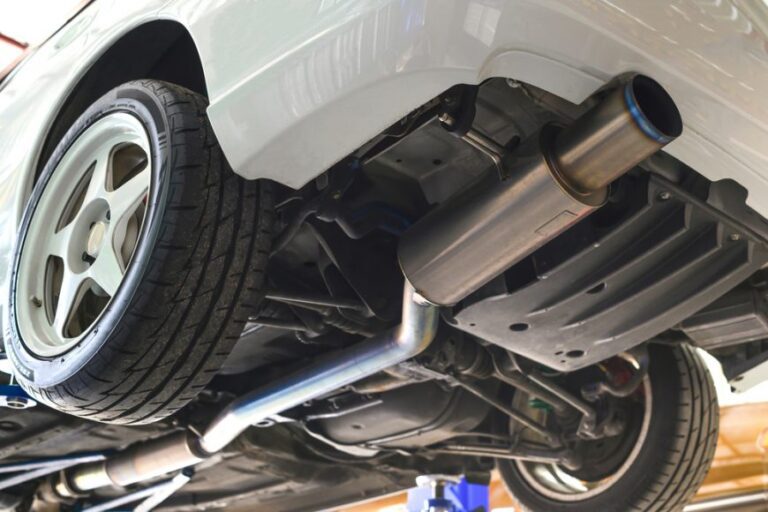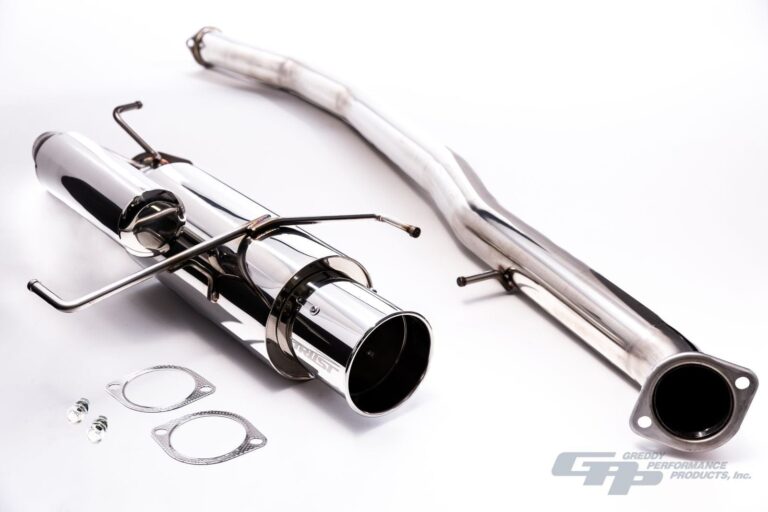Catalytic Converter Troubleshooting: Unveiling the Hidden Secrets
Catalytic converter troubleshooting can help identify and resolve issues with the vehicle’s emissions control system. An accurate diagnosis ensures the efficient functioning of the converter and prevents further damage.
In this introduction, we will explore common problems that may arise with catalytic converters and provide insights on troubleshooting methods. Understanding the symptoms and causes of these issues can help car owners address them promptly, ensuring optimal performance and reducing harmful emissions.
By following the troubleshooting steps outlined in this guide, you can save time and money on repairs while also contributing to a cleaner environment. So, let’s dive into the world of catalytic converter troubleshooting and discover effective solutions.
Understanding The Role Of A Catalytic Converter
Understanding the Role of a Catalytic Converter
A catalytic converter plays a crucial role in reducing harmful emissions from a vehicle’s exhaust gases. It is an essential component of the exhaust system that converts harmful pollutants such as carbon monoxide, nitrogen oxides, and hydrocarbons into less harmful substances, like carbon dioxide, nitrogen, and water vapor. The converter contains a special catalyst that promotes a chemical reaction, allowing the conversion process to take place.
This emission control device helps protect the environment by preventing the release of harmful substances into the atmosphere. Additionally, it helps improve overall engine performance by allowing for efficient fuel combustion and reducing backpressure in the exhaust system.
However, over time, a catalytic converter can become clogged or damaged, leading to engine performance issues and increased emissions. Some common signs of a malfunctioning catalytic converter include a decrease in vehicle power, increased fuel consumption, and the illumination of the check engine light.
To ensure proper functioning and longevity of the catalytic converter, it is vital to maintain the vehicle’s engine and exhaust system regularly. This includes regular oil changes, proper fuel usage, and regular inspection of the converter for any signs of damage or obstruction.

Credit: www.khou.com
Signs And Symptoms Of A Failing Catalytic Converter
Strange smells and odors coming from the exhaust can be a clear indication of a failing catalytic converter. These smells are often described as a rotten egg or sulfuric odor, which is caused by the converter’s inability to efficiently convert harmful emissions.
Another sign of a failing catalytic converter is decreased engine performance and power. If you notice that your vehicle is struggling to accelerate or has a lack of power, it could be due to a clogged or damaged catalytic converter.
An illuminated check engine light is a common indicator of a failing converter as well. The onboard diagnostics system detects when the catalytic converter is not functioning properly and triggers the check engine light to alert the driver.
It’s important to address these signs and symptoms promptly, as a failing catalytic converter can lead to further engine damage and increased emissions. If you experience any of these issues, it is recommended to have your vehicle inspected by a qualified mechanic to determine the exact cause and necessary repairs.
Identifying Potential Causes Of Catalytic Converter Problems
During the troubleshooting process of a catalytic converter problem, it is important to identify the potential causes that could be contributing to the issue. One common cause is engine misfires, which can lead to an improper fuel-air mixture entering the converter, putting extra stress on it and causing it to fail. Another potential culprit is ignition system issues, such as faulty spark plugs or ignition coils, which can result in incomplete combustion and an increase in unburned fuel reaching the converter. Lastly, internal damage and overheating can also lead to catalytic converter problems. Over time, the converter’s delicate honeycomb-like structure can deteriorate due to excessive heat or physical damage, affecting its ability to properly convert harmful emissions. It is important to address these potential causes promptly to prevent further damage to the catalytic converter and ensure proper functioning of the vehicle.
Diy Catalytic Converter Troubleshooting And Inspection Techniques
Listening for rattling sounds from the converter: When troubleshooting your catalytic converter, one technique is to listen for any unusual rattling sounds coming from the converter. These sounds could indicate a loose or damaged internal substrate.
Conducting a visual inspection for physical damage: Another method is to visually inspect the catalytic converter for any physical damage. Look for signs of dents, cracks, or other forms of visible wear and tear, as these issues can impact the performance of the converter.
Using a scanning tool to check for error codes: Finally, using a scanning tool can help identify any error codes related to the catalytic converter. Connect the tool to the OBD-II port of your vehicle and scan for any codes that indicate issues with the converter. These codes can provide valuable insight into the specific problem your converter may be experiencing.
Catalytic Converter Maintenance Tips And Best Practices
Catalytic Converter Maintenance Tips and Best Practices
Maintaining a healthy catalytic converter is essential for the optimal performance of your vehicle. To ensure its longevity and prevent any potential issues, here are some tips to keep in mind:
- Proper fueling and avoiding contaminated gasoline: Always fill up your vehicle with high-quality gasoline from reputable sources. Contaminated gasoline can lead to the buildup of harmful deposits in the catalytic converter.
- Regularly inspecting and cleaning the exhaust system: Perform routine visual inspections of the exhaust system, including the catalytic converter. Look out for any signs of damage or blockages, such as dents, cracks, or excessive rust. Additionally, consider cleaning the converter periodically to remove any accumulated residue or debris.
- Scheduling routine tune-ups and maintenance checks: Regular tune-ups and maintenance checks can help detect and address issues before they become more significant problems. Have a professional inspect and evaluate the condition of your catalytic converter regularly.
Maintaining your catalytic converter through proper fueling, regular inspections, and scheduled maintenance can help extend its lifespan and ensure optimal performance for your vehicle.
The Importance Of Professional Diagnosis And Repair
The Importance of Professional Diagnosis and Repair
Understanding the limitations of DIY troubleshooting is crucial when dealing with catalytic converter problems. Although some car owners may attempt to diagnose and fix these issues themselves, seeking assistance from a certified mechanic or technician is highly recommended. Professionals have the knowledge, experience, and specialized tools to accurately diagnose and repair catalytic converter problems. Ignoring these problems can have serious consequences, including a decrease in overall vehicle performance, higher levels of exhaust emissions, and potential damage to other engine components. It’s important to understand that catalytic converter issues can be complex and require a comprehensive understanding of automotive systems. By entrusting the diagnosis and repair to a professional, car owners can ensure that the problem is properly resolved, preventing further damage and maintaining the efficiency and functionality of the catalytic converter.
Exploring Alternative Solutions To Catalytic Converter Issues
When faced with catalytic converter issues, it is important to explore alternative solutions. One option to consider is retrofitting a catalytic converter bypass kit. This can help address the problem by allowing the exhaust gases to bypass the converter, reducing the strain on it.
Another option to look into is aftermarket catalytic converters. These can be more cost-effective than OEM converters and may offer a better fit for your specific vehicle. However, it is crucial to do thorough research and ensure that the aftermarket converter meets the necessary emissions standards.
Catalytic converter cleaning and regeneration is yet another potential solution. This process involves chemically cleaning the converter or using heat to remove built-up deposits, restoring its efficiency. However, the feasibility of this approach depends on the level of damage and the specific converter model.
By considering these alternative solutions, you can tackle catalytic converter problems effectively and find the best approach for your situation.
Financial Considerations: Cost Of Troubleshooting And Repair
Financial Considerations: Cost of Troubleshooting and Repair
When experiencing issues with a catalytic converter, the cost of troubleshooting and repair is an important factor to consider. The average repair costs for catalytic converter problems can vary depending on the severity of the issue and the type of vehicle.
| Types of Catalytic Converter Issues | Average Repair Costs |
|---|---|
| Minor damage or clogging | Approximately $300 to $800 |
| Severe damage or failure | Approximately $1,000 to $2,500 |
Several factors can affect the final repair bill. These include the make and model of the vehicle, the complexity of the problem, and the cost of replacement parts. Additionally, labor costs may vary depending on the location and the mechanic’s expertise.
When faced with catalytic converter issues, it is essential to evaluate the value of repairing versus replacing the converter. In some cases, it may be more cost-effective to replace the entire converter rather than attempting repairs that may only provide a temporary solution.
Preventative Measures For Prolonging Catalytic Converter Lifespan
Preventative Measures for Prolonging Catalytic Converter Lifespan:
Following recommended maintenance schedules, using fuel additives and cleaners, and considering driving habits can significantly extend the lifespan of a catalytic converter.
| Recommended Maintenance Schedules | Regularly inspect and replace damaged or worn-out parts, such as the oxygen sensor, spark plugs, and exhaust system components. This helps to prevent additional strain on the converter. |
| Using Fuel Additives and Cleaners | Using fuel additives and cleaners formulated specifically for the catalytic converter can help remove carbon deposits and other residues. This improves the converter’s efficiency and reduces the risk of clogging. |
| Driving Habits | Practicing fuel-efficient driving habits, such as avoiding excessive idling, gradual acceleration, and maintaining appropriate speed limits, can reduce stress on the converter. Aggressive driving and sudden stops can increase the chance of damage. |
By incorporating these preventative measures into your maintenance routine, you can maximize the lifespan of your catalytic converter and avoid costly repairs or replacements.
Eco-friendly Disposal And Recycling Of Defective Catalytic Converters
Catalytic converters are an essential component of vehicle emissions control systems. However, when they become defective, it is crucial to dispose of them in an environmentally-friendly manner. Improper disposal can have severe consequences for the environment, including the release of harmful pollutants into the air, soil, and water sources. To prevent this, it is essential to identify local recycling programs and facilities that accept catalytic converters for proper recycling. These facilities have the expertise to implement eco-friendly disposal methods and ensure that valuable metals such as platinum, palladium, and rhodium are recovered from the converters for reuse. When transporting the defective converter, it is important to properly package it to prevent any leaks or contamination during transportation. By adhering to these practices, we can contribute to a cleaner and healthier environment.
Frequently Asked Questions Of Catalytic Converter Troubleshooting
What Are The Symptoms Of A Bad Catalytic Converter?
Symptoms of a bad catalytic converter include reduced engine performance, poor fuel efficiency, and a strong sulfur smell. Additionally, you may experience a loss of power and a sudden increase in exhaust emissions. Unusual noises such as rattling or hissing can also indicate a malfunctioning catalytic converter.
How Do You Diagnose A Faulty Catalytic Converter?
To diagnose a faulty catalytic converter, you can evaluate a few signs. Look for decreased engine performance, increased emissions, and a rotten egg odor. You can also run a diagnostic scan to check for trouble codes related to the converter.
Overall, these indicators can help determine if the catalytic converter is faulty.
What Are The 3 Most Leading Failures Of A Catalytic Converter?
The leading failures of a catalytic converter include catalyst poisoning, thermal stress, and physical damage. Catalyst poisoning is caused by contaminants in fuel or oil. Thermal stress occurs when the converter is exposed to high temperatures, leading to a decrease in effectiveness.
Physical damage can be caused by impact or corrosion.
Can I Unclog My Catalytic Converter?
No, you cannot unclog a catalytic converter. It’s a complex component of your vehicle’s exhaust system that requires professional attention. Attempting to do it yourself can cause more damage and may even be illegal. Leave it to the experts for proper diagnosis and repair.
Conclusion
To troubleshoot catalytic converter issues, keep an eye out for warning signs like decreased engine performance and unpleasant odors. Regular maintenance, such as checking for clogs or leaks, can help identify potential problems early on. Additionally, ensuring that you use the correct fuel and maintain proper engine operation can reduce the risk of catalytic converter troubles.
Prioritizing these measures will not only keep your vehicle running smoothly but also contribute to a cleaner environment. So, stay vigilant and proactive in taking care of your catalytic converter.








